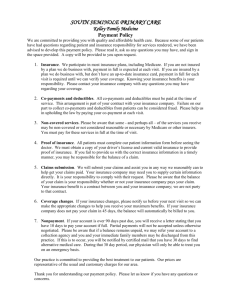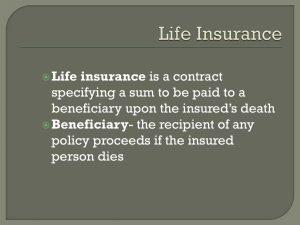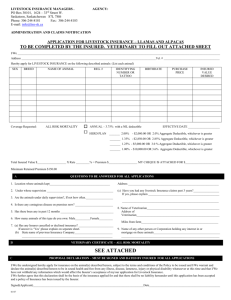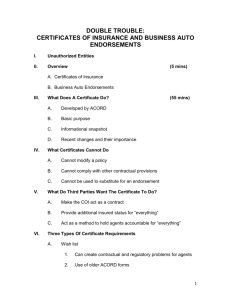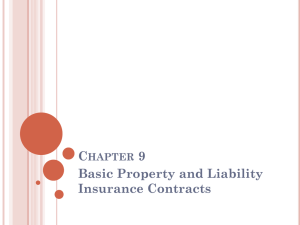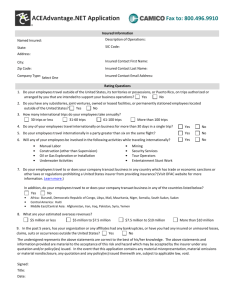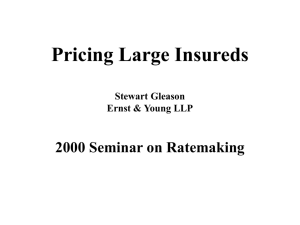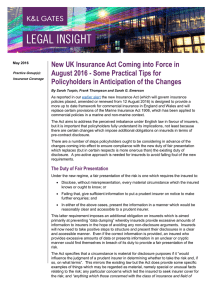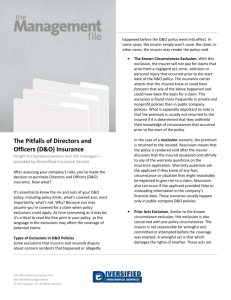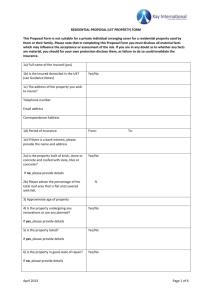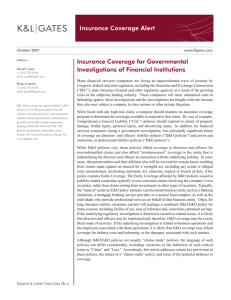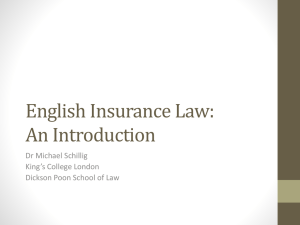Chapter 9: Basic Property and Liability Insurance Contracts
advertisement
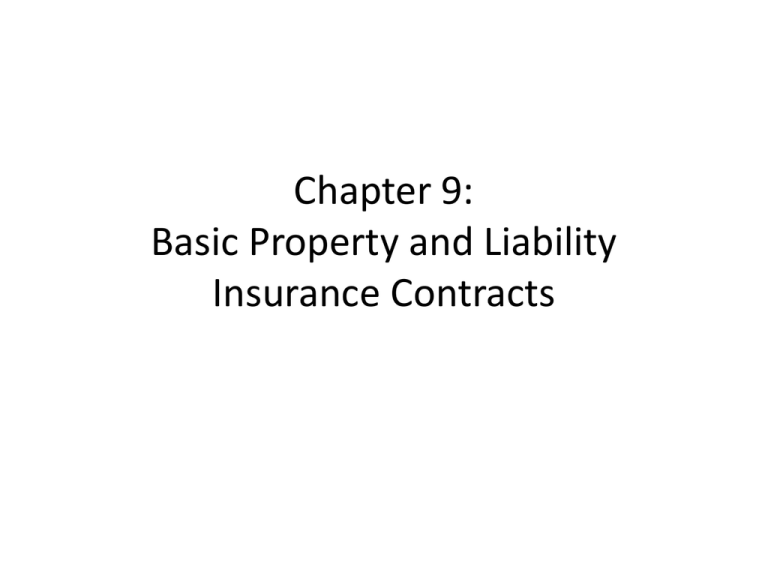
Chapter 9: Basic Property and Liability Insurance Contracts • • • • • • • Declarations Definitions Insuring agreements Exclusions Endorsements and Riders Deductibles Conditions Standardized Insurance Policies - Why? • More economical to print and maintain • Eases the development of rates - given a standard coverage set • Loss and claim data of different companies can be combined to provide more credible data • Meaning of standardized policies becomes known to attorneys, courts, insurer’s employees, and consumers Standardization of Contracts • Not all US policies are ‘standard’ – Personal and Commercial policies are generally standardized – variations are found – The larger commercial policies can be “manuscript” but based on standard clauses • Many international policies are standardized too – Several Spanish-language (South American) policies are translations of US policies – Austrians use standardized HO and Auto policies Basic Parts of an Insurance Contract Declarations • Personalizes the insurance contract to the insured – What makes this contract different than others issued? • Usually first page of an insurance contract contains such things as: – – – – – – – Identifies the insurance company Identifies the named insured Policy period Policy limits Deductibles Premium Identifies forms and / or endorsements Basic Parts of an Insurance Contract Insuring Agreement • Broadly describes what is covered and the insurer’s and the insured’s rights, obligations, and duties • Examples from: – Homeowners (HO) – Auto (PAP) Basic Parts of an Insurance Contract Deductibles • Straight deductible - amount paid by insured before the insurer pays any money – Example: • $25,000 loss • $20,000 coverage • $ 1,000 deductible • Deductible from the loss – $25,000 - $1,000 = $24,000; $20,000 paid because hit policy limit Basic Parts of an Insurance Contract Deductibles • Reasons for deductibles – Reduces moral and morale hazard since insured pays a small portion of each loss – Eliminates the expenses involved in small, frequent claims and most losses are small – As a result premiums are lower Basic Parts of an Insurance Contract Definitions • Clarify meaning of words and terms in contract - [remember the doctrine of adhesion] • Found in definitions page, glossary, or throughout the contract • Reduces the word count in insurance policies Basic Parts of an Insurance Contract Exclusions • Identify losses that are not covered • Designed to: – Eliminate catastrophic events - flood, war – Eliminate moral or morale hazards - intentional loss, failure to protect property – Require extra charge - unfair to charge all insureds for covering $100,000 gun collections – Eliminate coverage where another policy is specifically designed for the coverage Basic Parts of an Insurance Contract Endorsements • Modify standard insurance contracts in predetermined ways - examples – Expand coverage – Delete exclusions in contract – Change definitions • e.g.: “ sporadic baby-sitting is not a “business” – Add locations / insureds / perils – Add additional insureds Basic Parts of an Insurance Contract Conditions • If you want the claim paid, you must meet the conditions stated in the contract. These include: – – – – – – – – No Concealment or Fraud No Suspension of coverage Cancellation – policy must be in force Other insurance does not apply or loss is shared Meet your duties after a loss Abide by the appraisal procedure Agree to salvage Agree to claims payment - time limits
